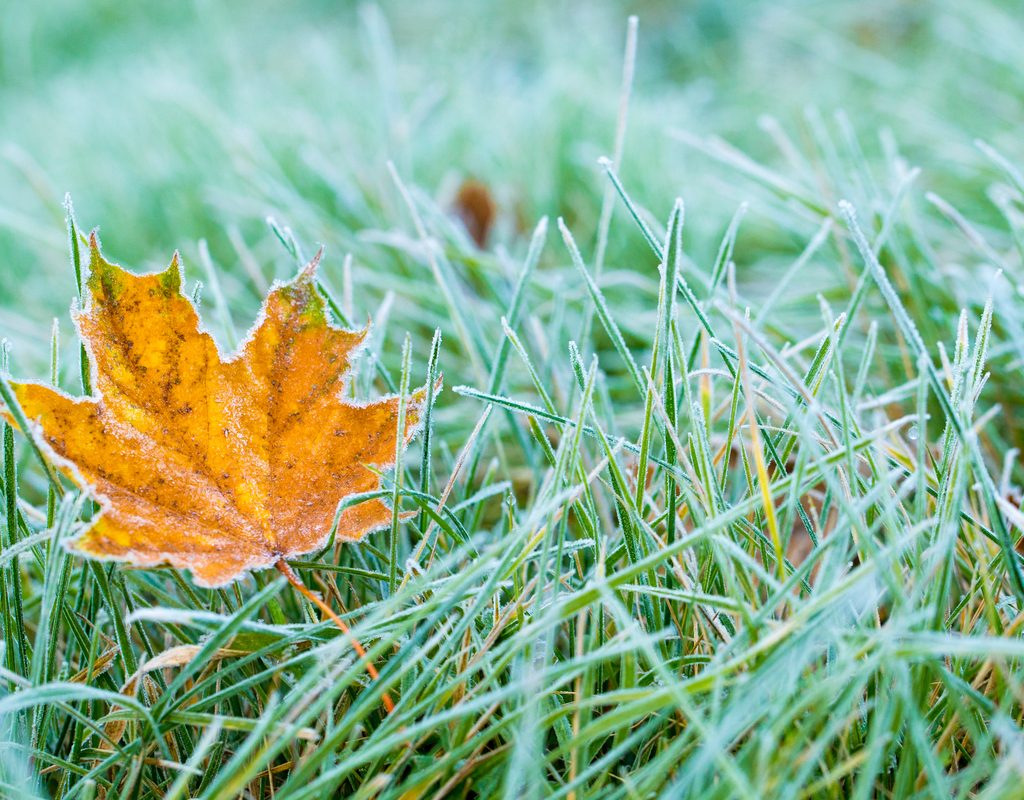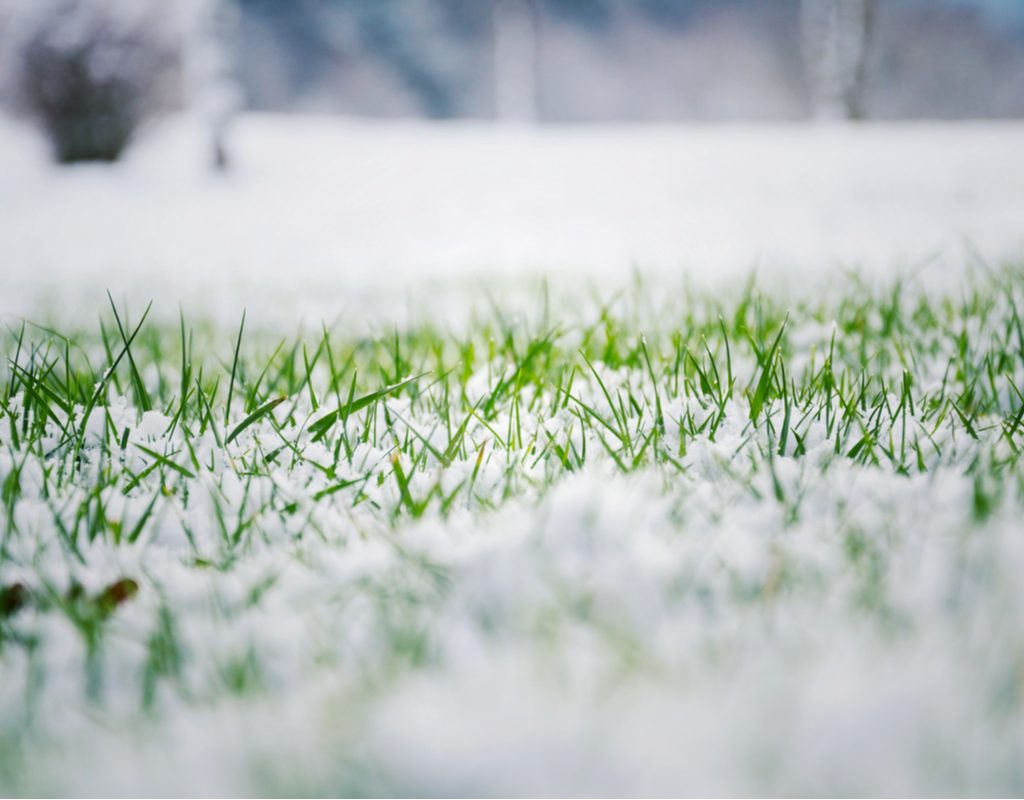
Anyone who appreciates great-looking lawns knows that they don’t happen by themselves. They need plenty of sunshine, the right soil conditions, good fertility, adequate moisture, and proper mowing to stay vigorous and healthy. Caring for the lawn is a year-round job, but it’s not always hard work. Winter lawn care is much less demanding than other times of the year, especially if you’ve prepared well in advance. After all, mowing, edging, and blowing are finished until spring and pests are mostly dormant.
While there are several important winter lawn care tasks, much of what it takes for grass to green up quickly in spring happens the year before. If you put a healthy lawn to bed in the fall, for the most part it will wake up healthy in spring. Let’s take a look at the final fall tasks and the winter lawn treatments that make all the difference.

Prepare for winter
In fall, cool season grasses, like Kentucky bluegrass, tall fescue, and perennial ryegrass, grow and utilize fertilizer while daytime temperatures are above 60° F. At the same time, warm season grasses, like Bermuda and zoysia grasses, transition into winter dormancy. Treat these grasses according to their unique life cycles.
Overseed and fertilize cool season grasses in late summer or early fall, four to six weeks before the first frost date. During this time, these grasses use the nutrient boost to heal damage from summer heat. New grass seedlings will continue to grow a deep root system well after the tops stop growing in frosty weather. Overseeding in fall gives the grass two cool growing seasons to become established before the onslaught of next summer’s heat stress.
Fertilize warm season grasses in early to mid August. Warm season grasses begin their transition to dormancy when the nights get cool, even while the days are still quite warm. Some of the nutrients applied now are stored in plant roots to help ensure a fast spring green up.
Soil acidity, or pH, determines how efficiently grass absorbs and utilizes nutrients. If a soil test determines that the pH is too acidic, apply lime to raise the pH in the fall. This adjustment will ensure that the soil and grass are in sync when fertilizer is applied in spring.

Winter lawn care tips
Continue regular lawn maintenance
Warm season grasses enter an obvious dormancy as they slow down, then stop growing and turn brown. Cool season grasses remain green and take advantage of warm weather throughout the fall and winter. Mow the lawn at the normal summer height until it stops growing.
Turn off the sprinkler system before the first freeze
Grass only needs the equivalent of a half inch of water per week in the winter. Most years, rain and snow provide ample moisture. Water deeply once a month, if needed, to to avoid damage during a winter drought.
Control weeds
Opportunistic winter weeds germinate and grow at colder temperatures. Apply pre-emergent weed preventer in early fall to block annuals like poa annua, henbit, and chickweed seeds from sprouting. Dig up individual perennial weeds like dandelions or clover. If the weed problem is more advanced, herbicides can help, but they must be applied within specific temperature ranges and while the weeds are actively growing. Carefully follow the directions on the product label.
Mulch or remove fallen leaves and other debris
Recycle autumn leaves to benefit the landscape. Up to six inches of fallen leaves add a significant amount of beneficial organic matter and trace minerals to the soil. Just use the lawn mower to chop them up. But too much of a good thing is not good. Remove excess leaves, branches, and other debris from the lawn so they do not smother the grass.
Limit traffic
When grass grows slowly or not at all, it is more susceptible to soil compaction. This is the time of year when dog paths become entrenched along fence lines, and the route to the garden shed becomes more obvious. Limiting overall lawn traffic will reduce this effect. Or, create intentional garden pathways with wood chips, gravel, or stepping stones on the most heavily used routes.
Use ice melt products that are safe for plants
Instead of rock salt, use potassium, magnesium, or calcium chloride. Salt is highly corrosive and damaging to both concrete surfaces and plants. On the other hand, these alternative ice melters include elements that plants actually use. The higher upfront cost of the safer alternatives is easily offset by the relatively lower amounts needed to do the job.
Life naturally slows down in the cold. Plants use winter as a time of rest and rejuvenation when they live off stored nutrients and internal structures are shored up. This is the time when lawns respond to a good vacation. As the manager of a landscape, the best thing you can do is give your lawn the break that it needs. Treat it well throughout the growing season so that it is robust and healthy at the end of the season. Send it off in good condition in fall, and it will come back in spring healthy, re-energized, and ready to grow.


